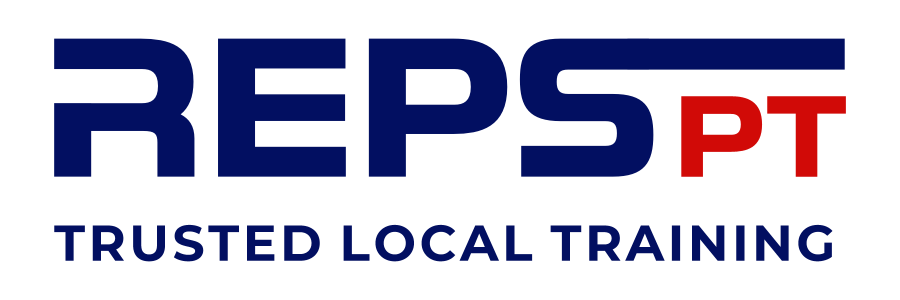Benefits and Form of the Seated Dumbbell Shoulder Press
The seated dumbbell shoulder press is a highly effective exercise for building strength and muscle mass in the shoulders, primarily targeting the deltoid muscles. Performing the press from a seated position offers additional stability and control, making it a safer and more focused movement compared to the standing variation. Here’s a breakdown of its benefits and proper form to maximise your results.
Benefits:
-
Targeted Shoulder Development
The primary benefit of the seated dumbbell shoulder press is its ability to isolate the deltoid muscles—particularly the anterior (front) and medial (middle) heads. This exercise helps in building broader, more defined shoulders, which is often a key component of an aesthetic upper body. -
Increased Stability and Control
Sitting down while performing the exercise stabilises your lower body, meaning you can focus entirely on pushing the weights overhead without worrying about maintaining balance. This allows you to lift heavier weights with proper form and reduces the risk of unnecessary strain. -
Reduced Lower Back Strain
The seated position helps to minimise the risk of lower back strain, which can sometimes occur in the standing variation, especially if you're using heavier weights. The backrest on a bench helps to support your spine, preventing excessive arching in the lower back. -
Engagement of Supporting Muscles
While the main focus is on the shoulders, the seated dumbbell shoulder press also engages the triceps, upper chest, and core for stability. This makes it a compound movement that not only develops the shoulders but also strengthens several other muscle groups. -
Improved Posture
As you press the dumbbells overhead, you engage your upper back and core to stabilise the movement, which can contribute to better posture over time. It’s an excellent exercise for counteracting the slouched posture that many of us develop from sitting for prolonged periods. -
Variation and Muscle Growth
The seated version of the shoulder press provides a variation that can help break plateaus, especially if you’ve been stuck doing standing presses or machine shoulder presses. Changing the stimulus can help promote continued muscle growth and prevent stagnation.
Form:
To get the most out of the seated dumbbell shoulder press, it’s important to maintain proper form. Follow these steps to ensure you're performing the exercise correctly:
-
Set Up the Bench:
- Sit on a bench with a backrest, making sure your feet are flat on the floor and your back is firmly supported against the rest.
- Keep your shoulders relaxed and your chest lifted, ensuring a natural curve in your lower back.
- Position the dumbbells on your knees to assist with the initial lift.
-
Starting Position:
- Hold a dumbbell in each hand with your palms facing forward and your elbows bent at about a 90-degree angle, so the dumbbells are level with your ears.
- Your elbows should be slightly in front of your torso, not flared out to the sides.
- Maintain a strong grip on the dumbbells, ensuring your wrists are straight and not bent backwards.
-
Press the Dumbbells Up:
- Push the dumbbells upwards, extending your arms overhead. Keep the movement controlled—do not jerk or use momentum to lift the weights.
- Fully extend your arms at the top, but avoid locking out your elbows completely, as this can place unnecessary stress on the joints.
- Keep your core engaged and avoid arching your back or leaning too far back as you press.
-
Lower the Dumbbells:
- Slowly lower the dumbbells back down to the starting position, keeping the movement smooth and controlled. Your elbows should come to around 90 degrees, or slightly below, depending on your range of motion and shoulder flexibility.
- Avoid dropping the weights too quickly to maximise the muscle tension during the eccentric phase.
-
Breathing:
- Exhale as you press the dumbbells up.
- Inhale as you lower the dumbbells back down.
-
Repetition and Sets:
- Aim for 3–4 sets of 8–12 reps to target muscle hypertrophy (growth). If your goal is strength, you can go for 4–6 reps with a heavier weight.
- Rest for 60–90 seconds between sets to allow for recovery.
Tips for Effectiveness:
- Start Light: If you’re new to this exercise or using heavier weights, start with a moderate weight to focus on form. The seated position is more stable, but it’s still important to ensure your technique remains solid.
- Control the Movement: Avoid using momentum to lift the weights. A controlled, slow motion on both the upward and downward phases of the press will maximise muscle engagement.
- Keep the Core Engaged: Your core should remain tight throughout the movement to support your spine and help prevent any lower back arching.
- Don’t Overextend: When pressing the dumbbells overhead, stop just short of locking your elbows out. This keeps the tension on the muscles and avoids stressing the joints.
- Maintain Proper Wrist Alignment: Keep your wrists straight and aligned with your forearms. Avoid bending your wrists backwards, as this can lead to strain or injury.
By performing the seated dumbbell shoulder press with proper form, you can effectively target and build your shoulder muscles, improve posture, and enhance overall upper body strength. Whether you're a beginner or an experienced lifter, this exercise is an excellent addition to your shoulder training routine.

